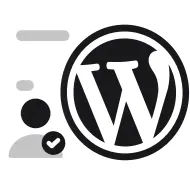In today’s digital-first world, having an online store is no longer optional—it’s a necessity for businesses aiming to thrive. But choosing the right platform to create your eCommerce store can be daunting. One popular option gaining traction is Webflow, a website builder known for its flexibility, design freedom, and powerful CMS capabilities. If you’re wondering, “Can I build an online store with Webflow?”, the short answer is yes—but there’s more to it. This guide will walk you through everything you need to know to launch a successful online store on Webflow.
Quick Summary:
- Yes, build an online store with Webflow.
- Great for unique design and content integration.
- Best for small to medium product catalogs.
- Less suited for large, complex e-commerce.
Table of Contents
- What Is Webflow?
- Why Choose Webflow for Your Online Store?
- 1. Design Flexibility
- 2. No Coding Required
- 3. Integrated CMS for Dynamic Content
- 4. SEO-Friendly
- 5. Scalable and Reliable
- Can You Sell Products Directly with Webflow?
- Steps to Build an Online Store with Webflow
- Step 1: Define Your Store Goals
- Step 2: Plan Your Store Structure
- Step 3: Design Your Store in Webflow
- Step 4: Add Products Using Webflow CMS
- Step 5: Configure eCommerce Settings
- Step 6: Optimize for SEO and Performance
- Step 7: Test Your Store
- Step 8: Launch Your Store
- Advantages of Using Webflow for Your Online Store
- Customization and Branding
- Integrated Marketing Tools
- Speed and Security
- Flexibility for Growth
- Challenges to Consider
- Tips to Maximize Success of Your Webflow Store
- Real-Life Example: From Slow Store to Optimized Webflow eCommerce
- How Qrolic Technologies Can Help
- Benefits of Partnering with Qrolic
- Common Questions About Webflow eCommerce
- Can I sell digital products on Webflow?
- Is Webflow suitable for large stores?
- Can I integrate third-party apps?
- Do I need coding skills?
- Conclusion
What Is Webflow?
Webflow is a no-code web design platform that allows you to design, build, and launch websites visually while simultaneously generating clean, semantic HTML, CSS, and JavaScript. Unlike traditional website builders like Wix or Squarespace, Webflow combines design flexibility with CMS capabilities, making it a preferred choice for designers and developers who want complete control over their website without touching code.
Some key features of Webflow include:
- Visual Designer: Drag-and-drop interface with complete design freedom.
- CMS Functionality: Create and manage dynamic content easily.
- eCommerce Capabilities: Sell products, manage inventory, and process payments.
- SEO Optimization: Built-in tools to optimize your store for search engines.
- Hosting & Security: Fast, secure hosting powered by Webflow servers.
Why Choose Webflow for Your Online Store?
If you’re considering building an online store, you might ask why Webflow stands out compared to other platforms like Shopify or WooCommerce. Here are some compelling reasons:
1. Design Flexibility
Webflow gives you complete control over your store’s layout, typography, colors, and animations. Unlike pre-built themes in Shopify, your store can have a truly unique look that matches your brand.
2. No Coding Required
Even without coding experience, you can create a functional online store. The visual designer allows you to customize every element without writing a single line of code.
3. Integrated CMS for Dynamic Content
Webflow’s CMS allows you to manage products, blogs, and pages dynamically. This is perfect for stores with large inventories or frequently updated content.
4. SEO-Friendly
With built-in SEO tools, clean code output, and fast loading speeds, Webflow stores are optimized for search engines, helping you rank higher and attract more organic traffic.
5. Scalable and Reliable
Whether you’re launching a small boutique or a high-traffic store, Webflow’s hosting ensures your website remains fast and reliable during traffic spikes.
Can You Sell Products Directly with Webflow?
Yes, Webflow has a fully functional eCommerce system that allows you to sell physical products, digital products, and even subscriptions. Key features include:
- Product Management: Easily add products, set pricing, upload images, and categorize items.
- Inventory Control: Track stock levels and manage low-stock alerts.
- Payment Gateways: Accept payments via Stripe, PayPal, and Apple Pay.
- Customizable Checkout: Design a checkout process that fits your brand perfectly.
- Shipping Options: Set shipping rates, offer free shipping, or provide local delivery.
- Tax Management: Automatically calculate taxes based on customer location.
Steps to Build an Online Store with Webflow
Building your store with Webflow can be broken down into a systematic process:
Step 1: Define Your Store Goals
Before diving into design, outline what you want your store to achieve:
- Are you selling physical or digital products?
- What is your target audience?
- How many products will you have?
- Will you require international shipping or subscriptions?
Step 2: Plan Your Store Structure
Map out your website hierarchy. Common pages include:
- Home page
- Shop/Product listing pages
- Product detail pages
- Cart and checkout pages
- About Us & Contact pages
- Blog (optional for SEO and content marketing)
Step 3: Design Your Store in Webflow
- Use Webflow Designer to create a visually appealing store.
- Ensure your design is mobile-responsive.
- Add animations and micro-interactions to enhance user experience.
Step 4: Add Products Using Webflow CMS
- Create a Products Collection in Webflow.
- Add product images, descriptions, SKUs, prices, and variants.
- Organize products with categories and tags for easy navigation.
Step 5: Configure eCommerce Settings
- Set up payment gateways like Stripe or PayPal.
- Define shipping zones and rates.
- Configure taxes based on your region.
- Customize checkout fields for a seamless experience.
Step 6: Optimize for SEO and Performance
- Add meta titles and descriptions for all pages.
- Use descriptive product URLs.
- Optimize images for faster loading.
- Enable SSL for secure transactions.
Step 7: Test Your Store
- Conduct test purchases to ensure checkout works.
- Test responsiveness across devices.
- Check for broken links and slow-loading pages.
Step 8: Launch Your Store
Once everything is ready, publish your Webflow store. Promote it via social media, email marketing, and SEO strategies to attract your first customers.
Advantages of Using Webflow for Your Online Store
Customization and Branding
Your store can stand out with a unique design tailored to your brand identity.
Integrated Marketing Tools
Webflow offers email signup forms, pop-ups, and blog integrations to drive traffic and convert visitors.
Speed and Security
Webflow hosting ensures your store loads quickly and safely, reducing cart abandonment rates.
Flexibility for Growth
From small shops to high-traffic stores, Webflow scales seamlessly without compromising performance.
Challenges to Consider
While Webflow is powerful, there are some limitations:
- Learning Curve: Beginners may need time to master the Designer interface.
- Fewer Plugins: Compared to Shopify or WooCommerce, Webflow has fewer third-party integrations.
- Cost: Webflow eCommerce plans are slightly higher than some traditional platforms.
These challenges are manageable with proper planning and, in many cases, professional help from an expert wordpress and Webflow agency.
Tips to Maximize Success of Your Webflow Store
- Use High-Quality Product Images: Clear, professional images increase conversion rates.
- Write Compelling Product Descriptions: Highlight benefits, features, and usage tips.
- Leverage Webflow CMS for Blogs: Educate customers and improve SEO rankings.
- Optimize Checkout: Simplify checkout steps to reduce cart abandonment.
- Integrate Analytics: Track visitor behavior and sales trends for informed decisions.
Real-Life Example: From Slow Store to Optimized Webflow eCommerce
Imagine you run a boutique selling handmade products. Your old website is slow, cluttered, and lacks mobile responsiveness. By moving to Webflow:
- Product pages load in under 2 seconds.
- Checkout is seamless across mobile and desktop.
- Dynamic product collections allow easy inventory management.
- SEO improvements drive 40% more organic traffic within three months.
This transformation highlights Webflow’s potential to turn a mediocre online store into a high-performing eCommerce platform.
How Qrolic Technologies Can Help
Building an online store on Webflow might seem simple, but optimizing for performance, scalability, and SEO requires expertise. That’s where Qrolic Technologies comes in.
Qrolic Technologies is an exclusive WordPress and Webflow agency specializing in:
- Custom website and eCommerce development
- Performance Optimization for high-traffic websites
- Conversion-focused design and UX
- SEO-friendly architecture and content strategies
- Ongoing support and maintenance
Whether you want to migrate from another platform or build a Webflow store from scratch, Qrolic ensures your website is secure, fast, and scalable. Their team of experts has a proven track record of transforming complex websites into user-friendly, high-performing platforms.
Benefits of Partnering with Qrolic
- Expertise: Skilled developers with years of experience in Webflow and wordpress.
- Customized Solutions: Tailored services to meet your business goals.
- Long-Term Support: Ongoing maintenance to keep your store running smoothly.
- Performance Optimization: Faster load times, improved Core Web Vitals, and enhanced SEO.
Common Questions About Webflow eCommerce
Can I sell digital products on Webflow?
Yes! Webflow supports downloadable products, such as eBooks, software, or music files.
Is Webflow suitable for large stores?
Absolutely. With proper optimization, Webflow can handle high-traffic eCommerce sites efficiently.
Can I integrate third-party apps?
Yes, though fewer than Shopify, Webflow supports key integrations like Zapier, Mailchimp, and analytics tools.
Do I need coding skills?
No, but understanding basic web design concepts helps. For advanced customization, professional assistance is recommended.
Conclusion
Yes, you can build an online store with Webflow, and it’s a fantastic choice for businesses seeking design freedom, scalability, and seamless user experience. From setting up products and payment gateways to optimizing SEO and performance, Webflow offers everything you need to launch a successful online store.
However, the process can be complex, especially for larger or high-traffic stores. Partnering with experts like Qrolic Technologies ensures your Webflow store is not just functional but also fast, secure, and optimized for growth.
Your online store is more than a website—it’s your digital storefront and a key driver of your business. By choosing Webflow and the right development partner, you’re setting your business up for success in today’s competitive eCommerce landscape.








